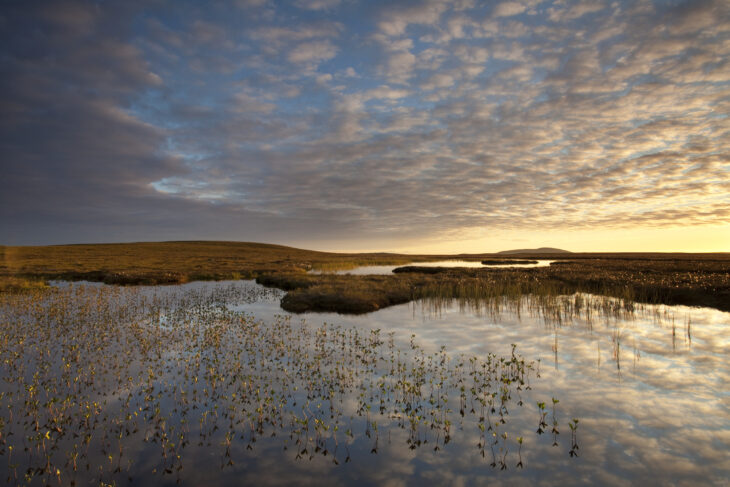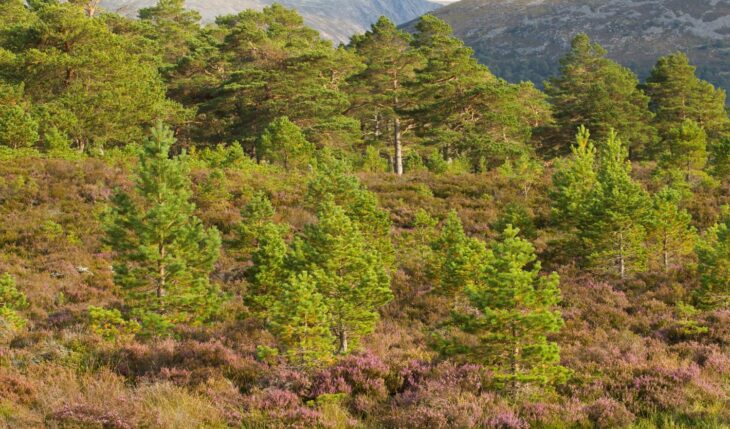Why land use partnerships are vital for a green recovery
The Scottish Land Commission recently published its Advice to Scottish Government on Regional Land Use Partnerships.

From the Trust’s point of view – with our vision for a connected network of healthy, resilient ecosystems supporting Scotland’s wildlife and people – there is an awful lot to welcome in this advice. We hope, given the extensive consultation of stakeholders that has shaped this document, that the government takes it on board and implements it.
Regional Land Use Partnerships partnerships were a commitment in the latest Programme for Government. Their primary focus is a placed-based approach to “maximising the potential of every part of Scotland’s land to contribute to the fight against climate change”. As I am writing this blog during the Presidential election a quote from a famous American statesman seems apt:
“The nation behaves well if it treats its natural resources as assets which it must turn over to the next generation increased, and not impaired, in value.” – Theodore Roosevelt
Roosevelt’s advice was clearly echoed in the 2020 report from the Scottish Advisory Group on Economic Recovery, which the Scottish Government has already accepted.
“Our approach to natural capital should be founded on the goal that each generation should leave its successor a set of natural assets at least as good as those that they inherited, so that future generations can choose how to live their lives and the economy has natural infrastructure to support it.”
And very encouragingly, the recently published advice from the Scottish Land Commission states that: “There’s a clear window of opportunity for the implementation of Regional Land Use Partnerships to meet the urgency of Scotland’s ambitious climate change and environment targets as well as supporting local led economic recovery and renewal.”
The Trust wants to see Regional Land Use Partnerships, and their underlying frameworks, help deliver a Scottish Nature Network as well as nature-based solutions to our most pressing problems such as health and well-being, massive inequality, the twin climate and biodiversity crisises and our economic decline. The benefits to nature of a joined-up coherent approach to land management are numerous, and were explored in further detail in our 50 for the Future series.
This strategic approach to developing nature networks is something that was recently adopted by the European Union in the Biodiversity Strategy for 2030. If the Scottish Government is going to honour its commitment to “keep pace” with Europe, then land use partnerships are an ideal place to start.

Key to achieving nature-based solutions will be connecting the partnerships directly to the levers of public funding. The ability to coordinate and prioritise public money within their area is essential to delivering multiple benefits. The Land Commission specifically highlight how just many stakeholders told them this.
The Commission concluded that land use partnerships should be “given the decision making ability to prioritise and direct significant public funding streams”, and that this should include rural funding once we leave the Common Agricultural Policy. We cannot miss such a glaring opportunity to design schemes that are better coordinated and give better value for money, people and the environment.
Directly related to public funding is the opportunity to leverage emerging income sources such as natural capital finance. The advice from the Commission specifically points to the potential for land use partnerships to “play the vital role of providing a focal point for the collaboration and governance needed to bring multiple sources of finance together”. However, the Trust strongly believes that we must also have leadership and coordination from the Scottish Government to realise potential private investment.
Integration with the new National Planning Framework will be key to the success of land use partnerships, and by extension the success of the Scottish Nature Network. The Land Commission is right to seek clarity around where the partnerships will sit in an already cluttered landscape of plans, strategies and policies. We have advocated for land use partnerships to be put on a firm legal footing. This would help give them real teeth and so we welcome the recommendation to give them a statutory basis.
Ultimately for land use partnerships to be successful they will require significant investment of time and resources from the Scottish Government. However, time is running out to achieve our climate and biodiversity targets and these partnerships offer a huge prize if they are successful. This prize is enabling both our communities of place and interest to work with nature to provide prosperity for Scotland, strongly building forward as part of our green recovery from Covid-19. I think Theodore Roosevelt would approve.
Bruce Wilson, Public Affairs Manager
Help protect Scotland’s wildlife
Our work to save Scotland’s wildlife is made possible thanks to the generosity of our members and supporters.
Join today from just £3 a month to help protect the species you love.
Preface
The Scottish Land Commission recently published its Advice to Scottish Government on Regional Land Use Partnerships. From the Trust’s point of view – with our vision for a connected network …
